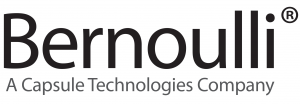
Takeaways from the 2018 AARC Conference
by Sam Larson, Vice President Marketing
We’ve just returned from the 2018 American Association for Respiratory Care (AARC) Congress, in Las Vegas, where we demonstrated the clinical surveillance capabilities of our Bernoulli One™ platform; engaged in energetic conversations with hundreds of respiratory care professionals; and attended a number of in-depth education sessions that drove the advancement of patient quality and safety.
Here are the significant takeaways we drew from the Congress.
The Stakes Regarding Patient Safety are High. Patients requiring respiratory support (such as mechanical ventilation, mask ventilation or CPAP) or respiratory monitoring (such as capnography for patients at risk of opioid-induced respiratory depression) are not confined to the ICU. They can be found in many care units across the healthcare enterprise. However, safely surveilling these patients in MED-SURG or other lower acuity units can be uniquely challenging for respiratory therapists for a number of reasons. For example, many hospital units now include single-patient room options, making it difficult to directly see and hear patients or associated medical devices from the hallway. Therapists may also need to cover patients across multiple departments, which can lead to under-monitored patients and greater safety risks.
To ensure the ongoing safety of all patients, respiratory therapists and other clinical team members in these areas need tools that provide remote access to real-time insights on the conditions of their patients in order to facilitate proactive interventions.
According to a new KLAS report that featured Bernoulli, “Clinical surveillance tools hold the promise of giving caregivers clinically actionable insights that decrease mortality, reduce readmissions, and improve overall patient outcomes, and clinicians expect these alerts to be embedded directly within their workflow.”
Continuous Clinical Surveillance is Preventative. The persistence of preventable, catastrophic respiratory compromise is a primary driver of clinical surveillance investments. One speaker at the Congress in a session on Patient Safety noted multiple tragic examples of missed ventilator alarms that resulted in significant patient harm or death.
Common monitoring practices are wholly inadequate to ensure the safety of these patients. Research cited in Bernoulli’s eBook—Continuous Clinical Surveillance—notes that “the overwhelming majority of cases involving respiratory compromise—97 percent—could have been prevented with the appropriate surveillance practices.”
The Call for a Solution is Clear. Hospital investments in clinical surveillance and analytics solutions are driven by organizations who are migrating toward value-based care models and are trying to achieve the objectives of value-based care, including improving care quality and outcomes and reducing clinical variation and healthcare costs. This can be clearly seen for respiratory care with the CDC/NHSN reporting requirements for Ventilator Associated Events (VAEs) and the drive in many hospitals and healthcare systems to optimize ventilator weaning protocols and improve safety for respiratory and other high-risk patients.
In fact, according to an analysis of the clinical surveillance market by Spyglass Consulting, 83 percent of hospitals have made some investments in clinical surveillance solutions, and 73 percent report that they plan to make new or incremental investments in clinical surveillance solutions over the next years.
Bernoulli is Leading the Charge
During the AARC Congress, Bernoulli demonstrated our market-leading ventilated patient and respiratory depression surveillance applications inherent in Bernoulli One. We were thrilled with the responses, including one Director of Respiratory Care who remarked that being able to remotely access patient respiratory data in real-time has been a vision of theirs for several years.
Bernoulli One combines comprehensive and vendor-agnostic medical device integration with a powerful data aggregator, clinical surveillance, advanced alarm management, predictive analytics and robust distribution capabilities into a single platform.
These capabilities enable clinicians within any patient care department to draw accurate, real-time insights from centralized dashboards and mobile devices, aiding early detection of patient risks and deterioration. In fact according to KLAS, users of Bernoulli One – including several in Respiratory Care – are the most likely of any customer base to report high trust in their patient intervention alerts.
You can read more about the benefits of Bernoulli One here. Learn more about the clinical and business benefits of clinical surveillance by perusing our online Knowledge Center of white papers, case studies, blog posts and eBook detailing emerging trends in alarm management and medical device integration, as well as real-world customer success stories using the Bernoulli One platform.
About the Author:

Sam Larson
Vice President Marketing
Sam joined Bernoulli in May of 2015. For the 10 years prior he was with Draeger, an international leader in the fields of medical and safety technology, where he was Global Director of Care Area Management and Strategic Marketing for Intensive Care based at the Draeger headquarters in Luebeck, Germany, and most recently Vice President of Marketing for the Hospital Division in North America. Over his career he has also held various Marketing and Business Development leadership roles with Spacelabs Medical, Nidek, Medical Data Electronics and Sonosite. Mr. Larson has a BA degree in Communications from the University of Washington and has completed executive education and leadership development programs with IESE Business School (Spain) and Babson College. View Sam’s profile on Linkedin.



